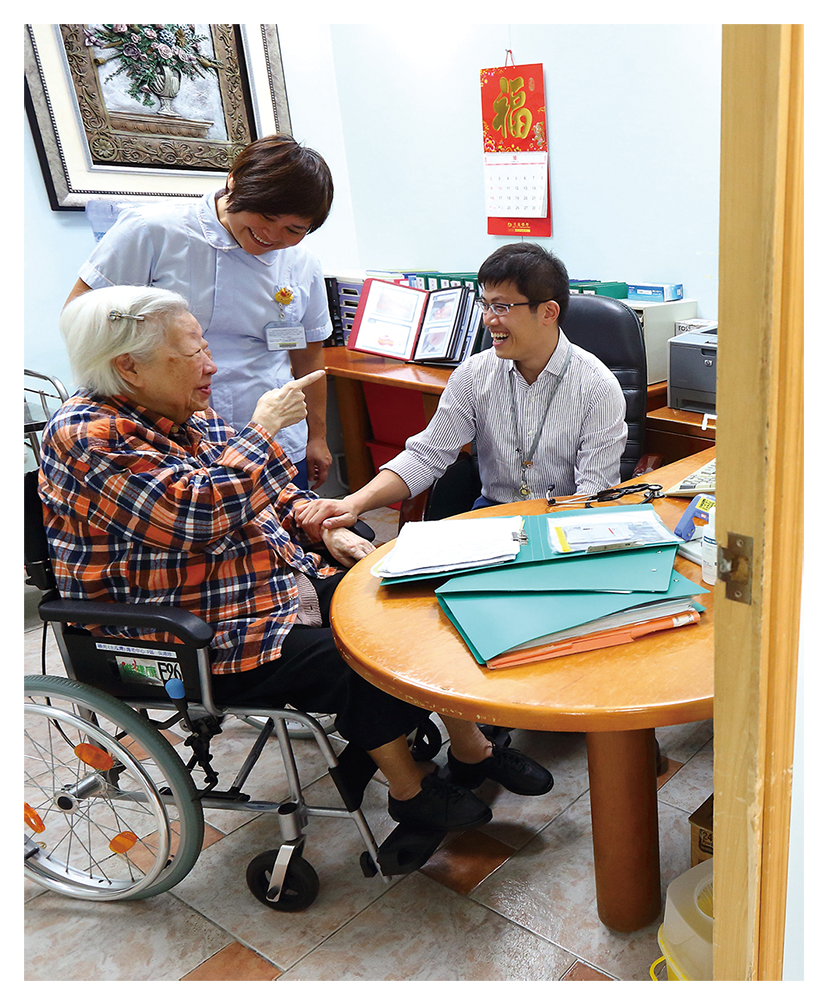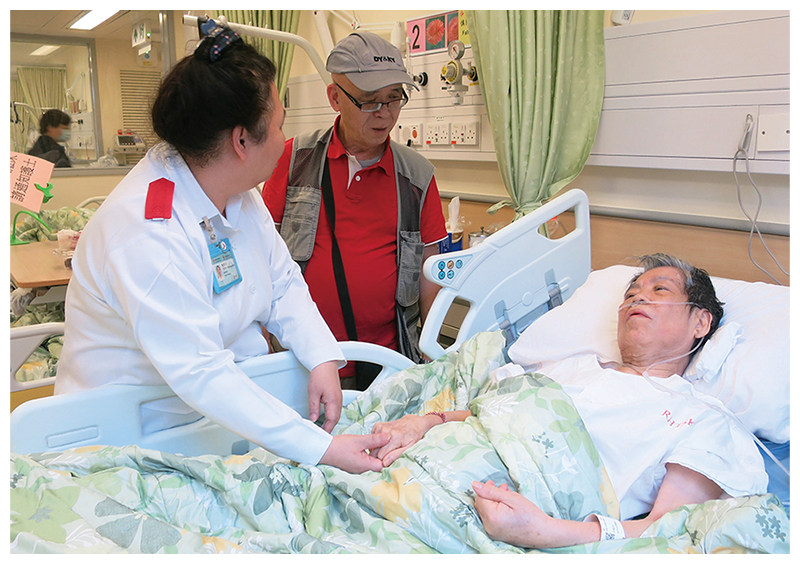
We are not immortal, but we can determine how to carry through life’s challenges. The Hospital Authority has recently released a strategic document titled Strategic Service Framework for Palliative Care which maps out the future development of palliative care services. A four-pronged approach will be adopted, namely improving governance and service organisation, care coordination, place of care and performance monitoring, to strengthen palliative care service. The new strategic plan emphasises patients’ choice in participating and formulating their own clinical care plan so as to improve the quality of life in four aspects – physical, psychological, social and spiritual well-being – in the last journey of life.
There are about 40,000 deaths in Hong Kong every year, 90% of which take place in public hospitals. One-third of these deaths were caused by cancer while another one-third by chronic diseases, including cardiac, pulmonary, neurological and renal diseases. “Patients with life-threatening conditions do not only suffer from physical pain, but also encounter psychological, social and spiritual sufferings. Palliative care allows patients to express their preferences for future medical or personal care when they are still mentally competent. This helps them relieve unnecessary physical sufferings and psychological stress, and allows them to continue living with dignity,” says Dr Lau Kam-shing, Chairman of Central Committee on Palliative Care.
“We need a paradigm shift in mindset,” says Dr Au Kar-ming, Medical Officer of Community Geriatric Assessment Team (CGAT) at Prince of Wales Hospital. It is important for everybody to be aware that patients with terminal illness have the right to express their preferences when they are capable to make decisions. Taking factors such as disease prognosis, benefits and burdens of treatment, values and preferences of the patient into consideration, patient, family and healthcare workers can plan together for future medical and personal care at the end of patient’s life. This includes discussion over ‘advance care planning’ (ACP) of patient, for example, preference on the use of non-invasive positive pressure ventilation when needed and decision on ‘Do-Not-Attempt Cardiopulmonary Resuscitation’.
Dr Au says, for instance, CGAT and Palliative Care Team (PC team) in New Territories East Cluster (NTEC) have carried out end-of-life care programme in residential care homes for the elderly (RCHEs). Through collaboration with RCHE staff, CGAT discusses with patients and their family members to formulate care plan of elderly residents with terminal illness, provides clinical care and support, such as symptom and pain management, helping them to have a peaceful last journey. At the same time, the PC team provides training for CGAT and other clinical teams, and they jointly provide training to RCHE staff. Around 250 patients have been supported by the CGAT of NTEC since programme implementation in 2015.
Currently, palliative care services are provided by HA in all seven clusters. The services are mainly department or hospital-based, and are provided by the PC teams of the Department of Medicine or the Department of Clinical Oncology. To enhance governance and service organisation, HA is developing cluster-based palliative care services in accordance with the new strategic service framework to improve the accessibility of palliative care for patients in need. For instance, Coordination Committees on Palliative Care Services in clusters could enable the pooling of expertise and optimal use of facilities and resources within cluster to increase service accessibility for both cancer and non-cancer patients facing terminal illnesses. Besides, collaboration among different specialties and shared care would be an important model of service. HA will also strengthen performance monitoring to ensure sustainable quality enhancement.
● “I have the right to choose.”
COVER STORY
● Support the teams that care for lives
● Paediatric palliative care to debut at new children’s hospital
● A visit to palliative care ward
● Characteristics of palliative care ward
FEATURE
● Green doctor turns waste into treasure
● Growing ‘pot-friendly’ fruits and vegetables
WHAT'S NEW
● Outstanding hospital projects won 5 HMA awards
HELEN HA
● HA staff survey calls for more communication and appreciation
● Web browsing made easy with improved accessibility
APP EXPRESS
● DM Care empowers diabetes patients
STAFF CORNER
● Patients express high confidence in Accident and Emergency service
● Pragmatic leaders are ready for new challenges
● Positive energy fills Psychological Care Carnival
● Teens explored unique summer hospital experience
● Empathy and patience reduce complaints


